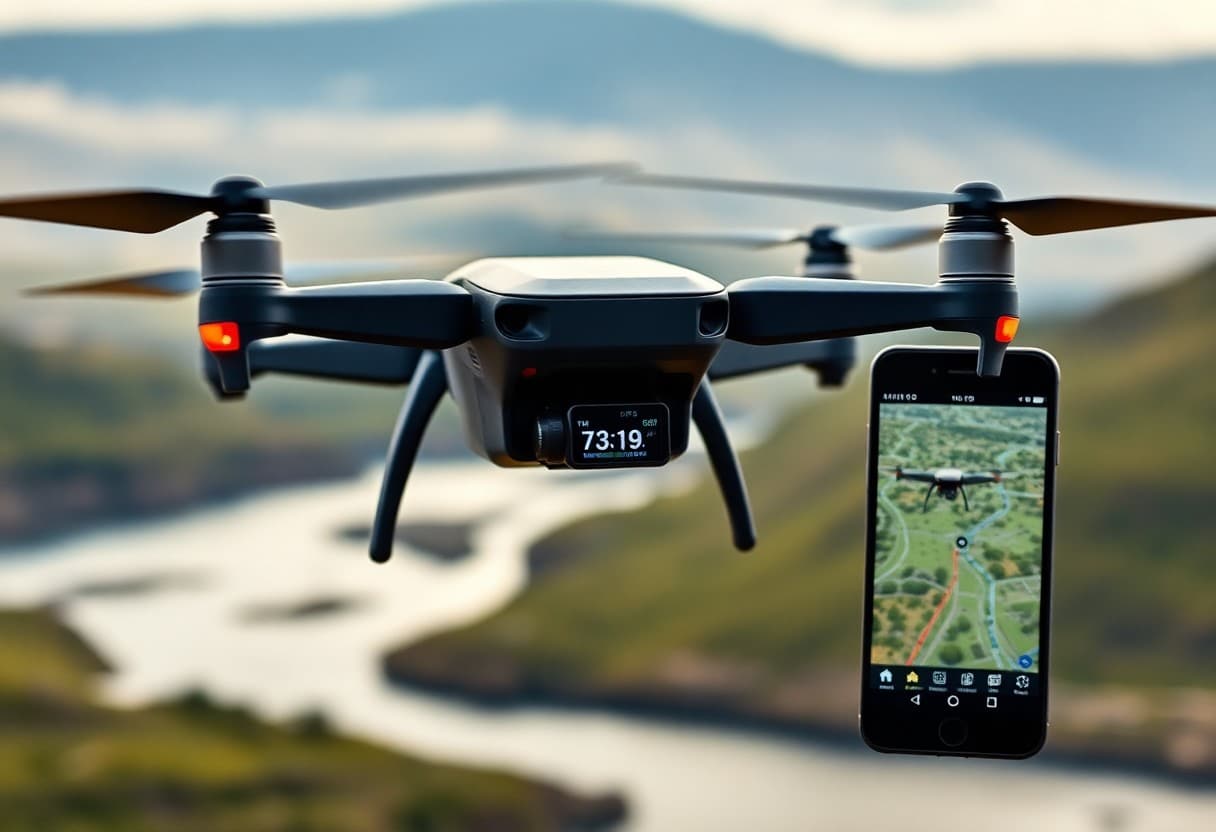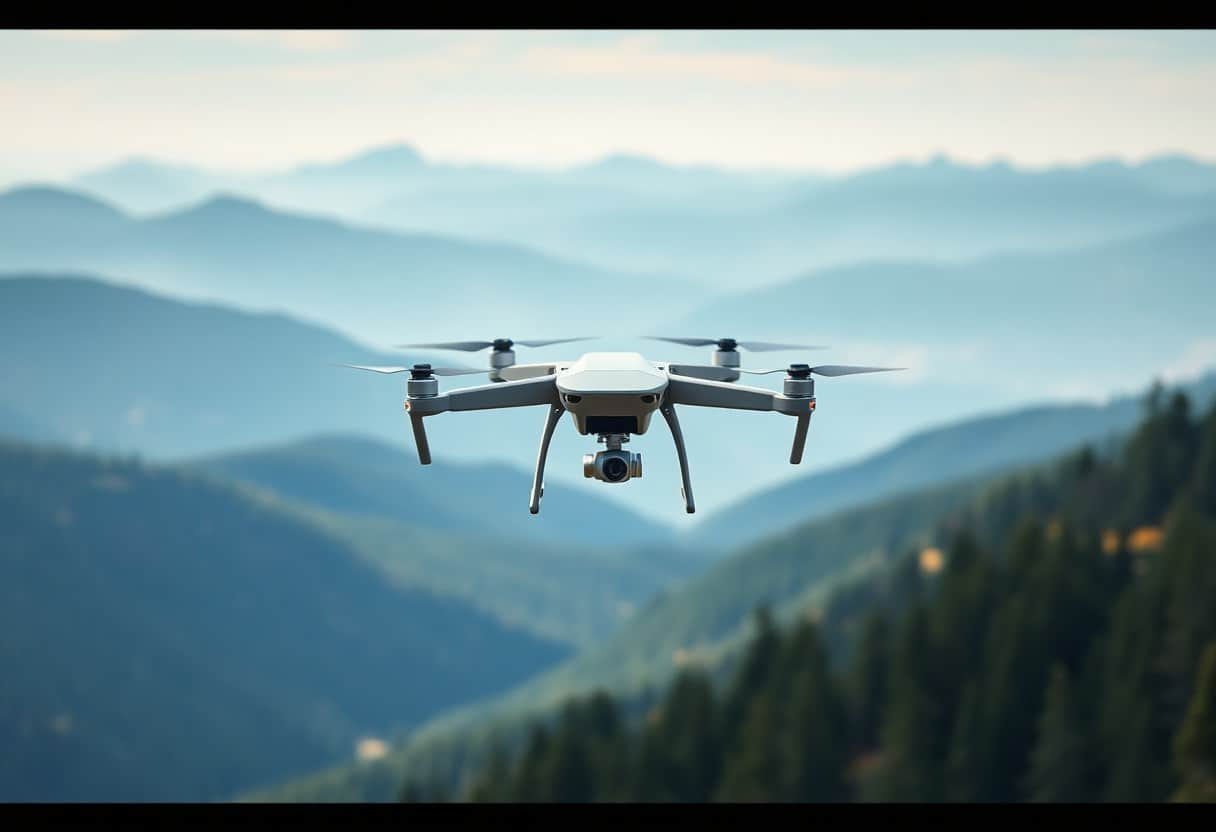9 Essential Steps to a Successful Drone Photography Project
If you are planning toSuccessful Drone Photography ProgramThis article will give you nine ways to get started.Key StepsIt helps you master the art of photography and maximize your results. Drone photography not only captures spectacular views, but also offers unique perspectives that you can't get from the ground. However, safety and legal issues are also part of the equation. By following these steps, you can improve the quality of your work while ensuring your safety and legality.
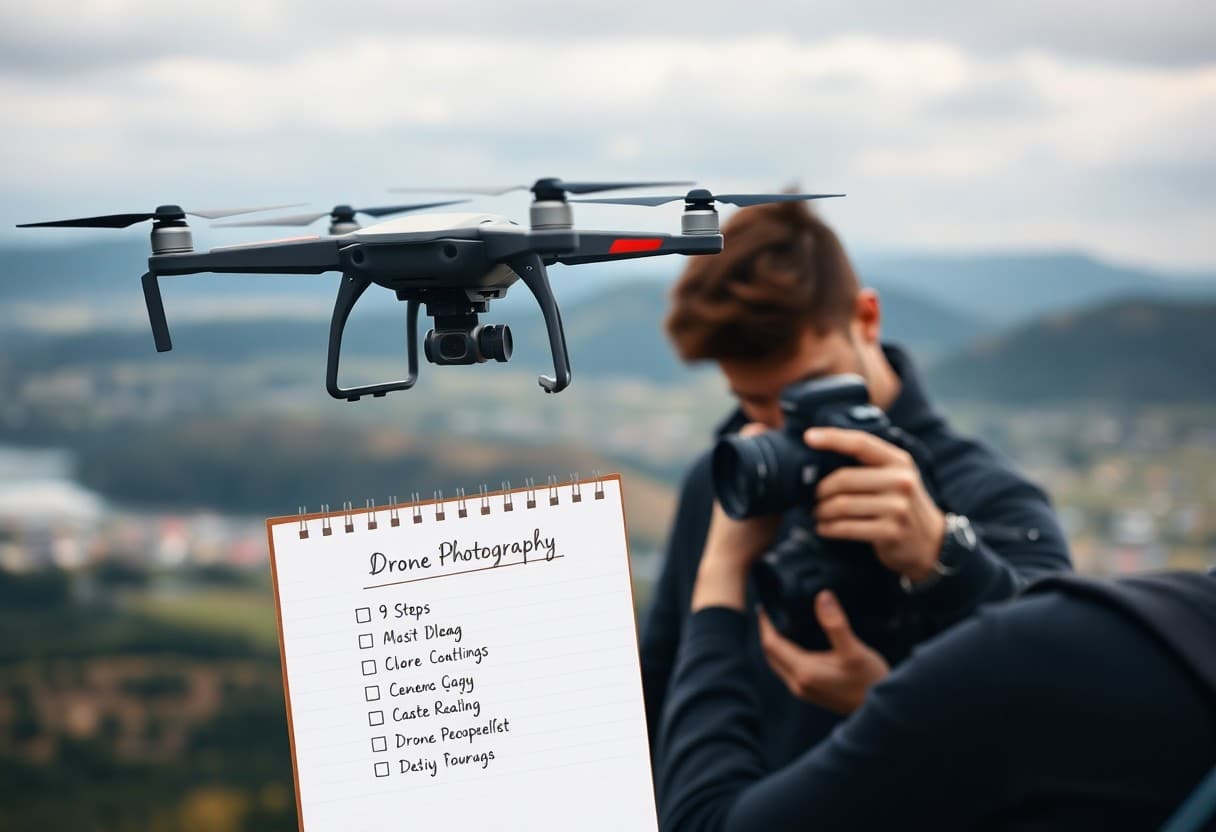
Key Points:
- Programs: Make sure you plan every step of the shoot and the expected results before you start the project.
- Equipment Preparation: Choose the right drone and camera equipment and make sure they function properly.
- Weather Considerations: Check the weather forecast before shooting to choose the best time to shoot.
- compliance with laws: Follow local drone rules and laws to ensure that filming is not illegal.
- Conducting test flights: Conduct at least one test flight to familiarize yourself with the drone and to check the results of the photography.
- Post-processing: Perfect editing and processing after shooting to enhance the quality of the final image.
- Sharing of Works: Share the results of your shoot on social media or in your portfolio for feedback and increased exposure.
Learn about drone equipment
In the drone photography program, learn about theDrone EquipmentThe various components of your drone are of paramount importance. Different drones have different features and technologies that directly affect your photography results and experience. When choosing a drone, you should consider itsCamera QualityThe flight time and itsstabilityand other factors.
Types of photography drones
When it comes to photography drones, you will find that there are several main types to choose from. These types ofDroneWith different features to suit different needs and budgets:
- Consumer Drones: Suitable for beginners.
- Professional Drone: Provides high quality photography features.
- Photography Expansion Drone: External camera can be installed.
- Racing Drones: Speed-oriented.
- Underwater drone: Suitable for shooting underwater scenes.
Therefore, before choosing a drone, you need to consider your needs and choose the type that best suits you.
Essential accessories and equipment
In addition to the drone itself, there are a number of options to choose fromRequired Accessoriesto enhance your photography experience. These accessories not only protect your drone, but also improve your shots.
In drone photography, the use ofSuitable accessoriescan make your work even better. Accessories you need to consider includeBattery,memory card,Protective Framesrespond in singingfiltersetc. These tools will enhance the flexibility and professionalism of your photography. You also need to check the condition of these accessories regularly, as damaged accessories may affect your shooting results. consequentlyKeeping your gear in tip-top shape is very important for your photography project.
Planning your shoot
Careful planning is essential before embarking on a drone photography project. Planning not only helps you ensure that the shoot goes smoothly, but also maximizes the chance of capturing the ideal images. You need to consider factors such as time, location, and climate, as well as create a detailed shooting plan to maximize efficiency during the shoot.
Determine your theme and goals
Before you start drone photography, you need to be clear about your subject and your goal. This will not only influence the composition of your shot, but also help you choose the right equipment and techniques. Whether you're photographing natural landscapes, cityscapes, or event scenes, having a clear objective will help stimulate your creativity and make the process smoother.
Study of local regulations and airspace
Before you start shooting, you mustUnderstanding local drone laws and airspace restrictions. This is not only to comply with the law, but also to ensure your safety. Different regions have different rules for flying drones, so knowing in advance will help you avoid legal issues and minimize interference with others.
When researching local regulations and airspace, pay particular attention toNo Fly Zoneand whether you need to applyFlight Permit. Certain locations, such as around airports or in specific urban areas, have strict restrictions on drone operations. Adhering to these regulations will not onlyEnsure the legality of your shotsIt also protects your own safety and the safety of others. Remember to check for updated regulations or guidelines to ensure your program is not compromised.
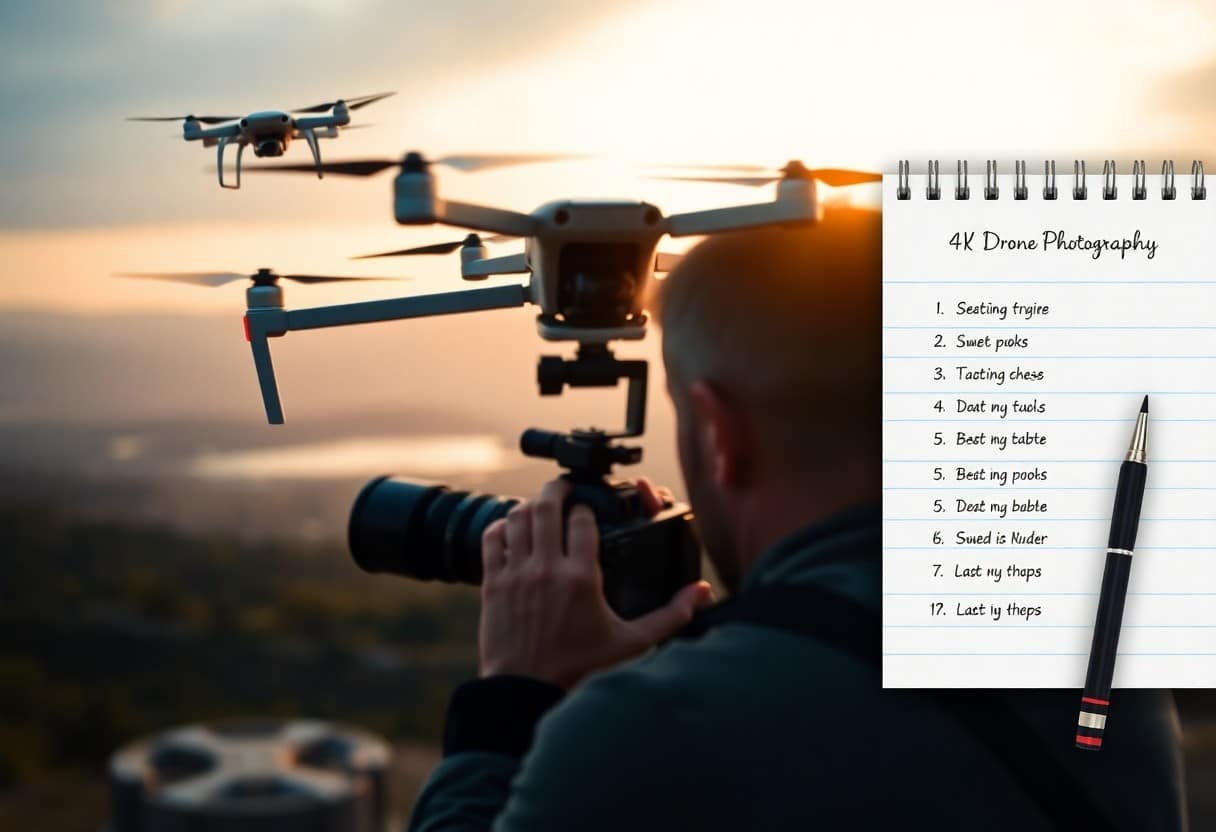
Mastering Drone Settings
When it comes to drone photography, proper setup is crucial. You'll need to familiarize yourself with the features and options to ensure you capture the best possible images. Learn aboutHow Smooth Drone Movement Can Transform Your Aerial FootageIt will be very beneficial to your project.
Camera settings for best images
To get the best image quality, you need to adjust your camera's ISO, shutter speed and aperture settings. Choose a low ISO to minimize noise and make sure the shutter speed is fast enough to prevent blurring.
Flight settings for smooth operation
Flight settings are an important part of drone photography. Choosing the right flight mode and stability settings can make your photography more stable. You should adjust the wind speed and altitude to avoidUnnecessary shakingrespond in singingaccidental collision. In addition, make sure that you regularly check the batteries and software versions of your airplane to maintain optimal performance.
To ensure a stable and smooth flight, you must first select a flight mode that is suitable for the current environment, for exampleGPS modemaybeAttitude Mode. Take pictures at lower wind speeds to minimize the effect on the image. At the same time, the correct setting of flight speed and direction will help to obtain smooth shooting results. Before flying, you must check the machine carefully to ensure that all parts are functioning properly, so that you can avoid accidents during the shooting process.
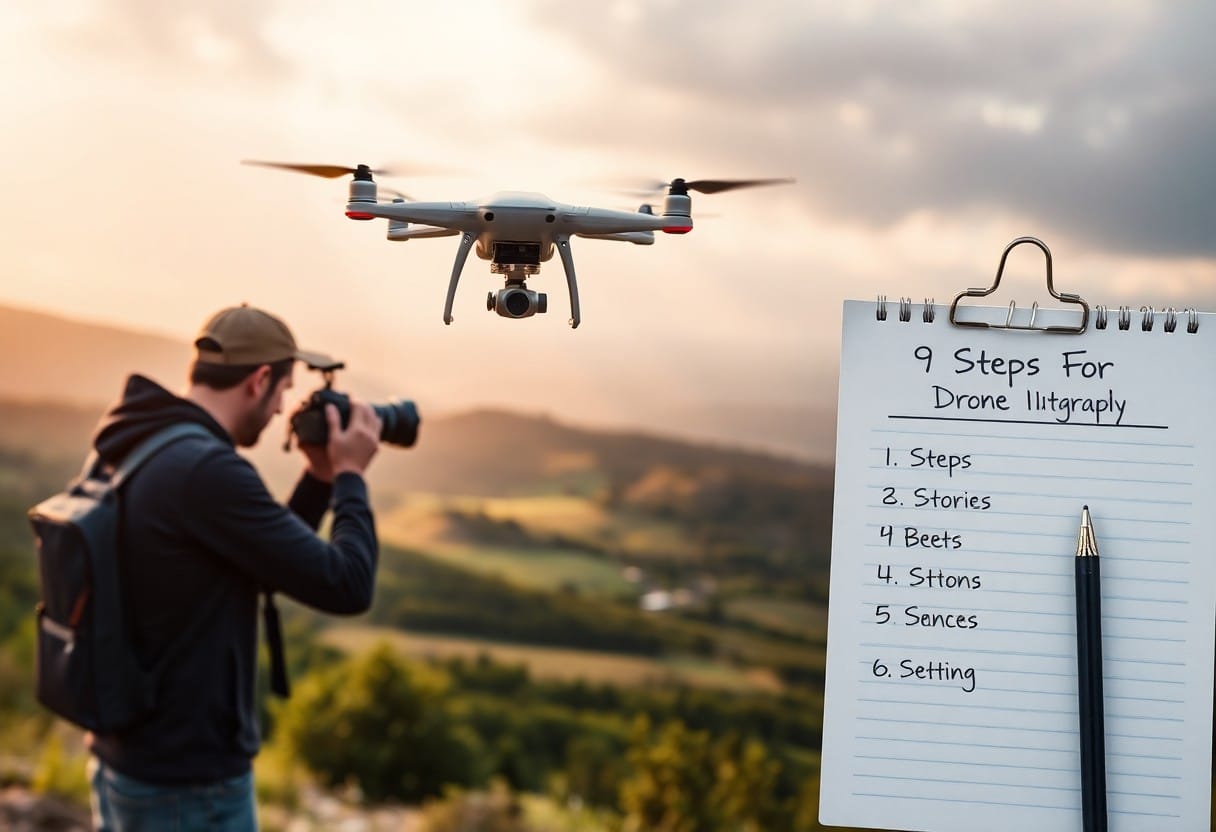
Compositional Skills
Successful drone photography programs are about learning a variety ofCompositional SkillsThis will improve the quality of your work. Utilization9 Key Steps to Perfecting Drone Crewing TechnologyYou can use different compositional techniques to attract the viewer's attention and make your photos more impactful.
Basic Composition Rules
In drone photography, masteringBasic Composition RulesRules that are crucial, such as the rule of thirds and guide lines, will help you arrange the elements of your picture in a more organized manner, thus enhancing the overall professional look of your photo. Remember to keep it simple and make sure that the subject matter stands out, so that it can better attract the attention of the audience.
Creative Angles and Perspectives
exploratoryCreative Angles and PerspectivesMake your drone photography stand out. Experiment with different heights and orientations to present unique perspectives and add depth and dimension to your photos. For example, you can look down at the earth from above or choose a low angle to show off grand buildings or natural landscapes.
ThroughCreative Angles and PerspectivesYour photography can tell a whole new story. Consider shooting from unexpected points, such as through a tree canopy or below a horizontal line, to surprise the viewer with an extraordinary presentation of the scene. For example, add a unique height to your image.Drama and emotionThe most important thing you can do is to emphasize the theme you want to convey. This good practice not only catches the eye, but also personalizes your photography.
security consideration
In conducting the drone photography project.suretyIt's important. Make sure you comply with local laws and regulations and assess the environment before flying. Always carry out a thorough risk assessment and be aware of the drone's operating limitations before filming. In addition, you can refer toComplete your drone authorization process in 6 easy stepsTo increase your safety knowledge.
Pre-flight safety check.
Before each flight, you should perform a detailed pre-flight inspection, including checking the condition of the drone's batteries and the functioning of the propellers and camera equipment. Ensure that your drone is in good working order and that the flight area is accessible and safe.
Best Practices for Safe Flying
When flying, follow someBest Practiceswill help you stay safe. This includes keeping the drone in sight, avoiding flying over crowds, and monitoring weather changes. Make sure you familiarize yourself with the drone's operator's manual and follow proper flight procedures to reduce potential risks.
When conducting drone flights, comply with theBest Practices for Safe FlyingIt's important. You should ensure that the drone is always in your line of sight, avoid flying in unstable weather conditions, and be aware of obstacles in your surroundings, such as buildings and power lines. Also, regularly check your drone for software updates and technical faults to prevent accidents. Your thorough preparation and vigilance will ensure your safety and the safety of others.
Post-processing your images
After you've completed your drone photography, post-processing is a critical step in improving the quality of your images. You'll want to carefully examine each photo to make sure the colors, contrast, and details are perfected. Why not utilize theFilters and Adjustment ToolsTo make your images more attractive and convey the emotions you want to express.
Recommended Software and Technology
In post-processing, you can choose to use software that is easy on the eyes, such as theAdobe LightroommaybePhotoshop. These tools offer an easy-to-use interface with powerful editing features that allow you to quickly and comfortably adjust all aspects of your images. By utilizing these technologies, you will be able to enhance the quality of your work.
Enhancement of visual appeal
To enhance the visual appeal of your images, you can go from different angles toAdjusting Color BalanceYou can also make adjustments to the exposure compensation and contrast of your images. These adjustments, when done properly, can bring out a stronger emotion and atmosphere in your images. The most important thing is to keep each element in harmony, making sure that the image as a whole is not too harsh or out of focus, so that the viewer can savor your work.
9 Essential Steps to a Successful Drone Photography Project
When undertaking a drone photography project, following these 9 essential steps will ensure your success. From choosing the right equipment, planning the location, understanding the legalities, and post-processing, each step is essential. By remaining professional, flexible and utilizing technology, you will be able to create beautiful and engaging images that showcase the full power of drone photography. Mastering these elements will help you enhance your professionalism and creativity in this field.
Frequently Asked Questions
Q: What is the first step in a drone photography project?
A: First of all, it is very important to set a clear goal. You need to ask yourself what the purpose of the project is, for example, whether it is for commercial use, artistic creation or personal documentation. Clear goals will help you stay on course throughout the process.
Q: How to choose the right drone?
A: Choosing the right drone depends on your needs and budget. If you only need to take high-quality photos, a simpler model may suffice, while a high-specification drone will be needed if video recording or complex filming is involved. After recognizing your needs, research the performance and features of different models.
Q: What are the laws and regulations to follow when taking drone photography?
A: Laws and regulations governing the use of drones vary from place to place. Typically, there are altitude restrictions, no-fly zones, and legality in the airspace that need to be followed. Always check local drone laws before filming.
Q: How do I plan a location?
A: Accurate planning requires prior scouting of the location, including lighting, climate and environmental factors. Use maps and GIS to consider the best time frame and angle to ensure the best possible results.
Q: How to avoid common shooting mistakes in drone photography?
A: To avoid common shooting mistakes, you can take test shots on location beforehand to check the lens clarity, stability and shooting settings. In addition, familiarizing yourself with the drone's operation techniques is the key to avoiding mistakes, and practicing more can increase the success rate of shooting.
Q: How do I post-process my drone photos?
A: Post-processing is an important part of enhancing the quality of your drone photography. Use professional image editing software, such as Adobe Lightroom or Photoshop, to perform color correction, cropping and other editing operations to enhance the visual effect of your photos.
Q: What are some effective ways to share and showcase my drone photography work?
A: Effective ways to share your drone photography include social media platforms, personal websites, photo exhibitions, or entering competitions. Choosing the right channel can attract more target audience and increase the exposure of your work.
